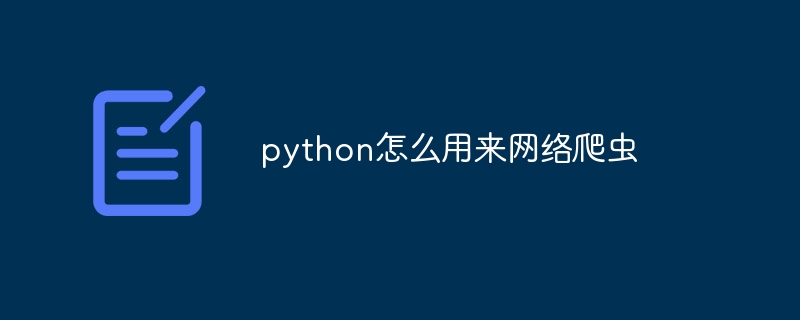python怎么用来网络爬虫
可以使用 python 进行网络爬虫,方法如下:安装必要的库:requests 和 beautifulsoup建立请求会话处理 http 请求发送 http 请求获取响应解析响应中的 html使用 beautifulsoup 提取所需数据循环遍历页面并提取数据(如果是多个页面)将提取的数据存储到本地文件或数据库

Python 网络爬虫:入门指南
Python 是网络爬虫开发的流行语言,因为它易于使用、功能强大且用途广泛。让我们来看看如何使用 Python 进行网络爬虫。
第一步:安装必要的库
首先,你需要安装 requests 和 BeautifulSoup 等 Python 库:
pip install requests pip install bs4
第二步:建立请求会话
接下来,创建一个请求会话来处理 HTTP 请求:
import requests session = requests.Session()
第三步:发送 HTTP 请求
使用 requests 库发送 HTTP 请求并获取响应:
response = session.get("https://example.com")
第四步:解析 HTML
使用 BeautifulSoup 库解析响应中的 HTML:
from bs4 import BeautifulSoup html_doc = BeautifulSoup(response.content, "html.parser")
第五步:提取数据
使用 BeautifulSoup 的 find()、find_all() 和 select() 方法提取所需数据:
# 提取标题 title = html_doc.find("title") # 提取所有链接 links = html_doc.find_all("a")
第六步:循环遍历页面并提取数据
如果你需要从多个页面提取数据,可以使用循环遍历页面并应用相同的数据提取步骤:
for url in urls:
response = session.get(url)
html_doc = BeautifulSoup(response.content, "html.parser")
title = html_doc.find("title")
links = html_doc.find_all("a")
第七步:存储数据
最后,将提取的数据存储到本地文件或数据库中:
with open("titles.txt", "w") as f:
for title in titles:
f.write(title.text + "\n")
示例代码
以下是一个完整的示例代码,演示如何使用 Python 抓取某个网站上的所有链接:
import requests from bs4 import BeautifulSoup session = requests.Session() response = session.get("https://example.com") html_doc = BeautifulSoup(response.content, "html.parser") links = html_doc.find_all("a") for link in links: print(link.attrs["href"])
以上就是python怎么用来网络爬虫的详细内容,更多请关注其它相关文章!
